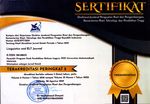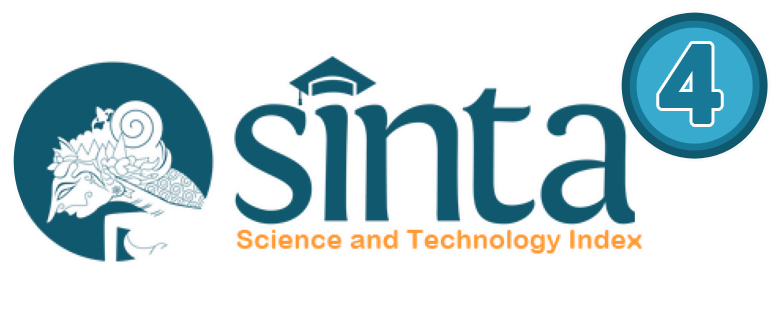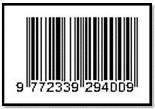Gender Difference and Errors in Writing Narrative Texts among Indonesian EFL College Students
Abstract
This study aims at identifying and analyzing linguistic and textual errors in writing narrative texts committed by male and female students of the fourth-semester English department students. The focus is on finding the significant differences between male and female students in terms of the frequencies of linguistic and textual errors in their narrative texts and the factors contributing to the errors. Data were collected through writing tests. Data were analyzed and interpreted by quantitative descriptive analysis and multivariate analysis using Two Ways ANOVA (F-Test) to investigate the significant differences linguistic and textual errors. Then the types of linguistic and textual errors in the two groups of male and female students were compared using descriptive analysis and statistical analysis. The results show that 57.93% of linguistic errors occurred in female’s narrative writing, with 42.07% occurred in male’s. Meanwhile, 46.29% of textual errors occurred in female’s narrative writing, with 53.71% found in the male’s. Statistically, there was no significantly different interaction between male and female students in terms of textual error frequency in writing narrative text, with p = 0.975 (p > 0.05) at the level of significance a = 5 %. And there was a significantly different interaction between male and female students in terms of linguistic error frequency in writing narrative texts, with p = 0.029 (p < 0.05) at the level of significance a = 5%. Several factors that affect female and male students’ errors in their narrative text are intralingual interference, language transfer, lack of knowledge about the narrative text, and gender difference.
Keywords
Full Text:
PDFReferences
Databoks.katadata.co.id. (26 November 2021). “Jumlah Siswa di Indonesia Berdasarkan Jenjang Pendidikan pada Tahun Ajaran 2020/2021”. Demografi. Penulis: Cintya Mutia Annur. https://databoks.katadata.co.id.
[ ] Brown, H.D. (1980). Principles of language learning and teaching. New Jersey: Prentice-Hall Inc.
[ ] Javed, M., Juan, W. X., & Nazli, S. (2012). A Study of Students’ Assessment in Writing Skills of the English Language. International Journal of Instruction, 6(2).
[ ] Jewell, J., & Malecki, C. K. (2005). The utility of CBM written language indices: An investigation of production-dependent, production-independent, and accurate-production scores. School Psychology Review, 34(1), 27-44.
[ ] Sugianto, R. (2009). Errors in narrative writing: A case study at the 4th semester students. A bachelor thesis. Unpublished.
[ ] Eliot, L. (2009). Pink brain, blue brain: How small differences grow into troublesome gaps--and what we can do about it. Houghton Mifflin Harcourt.
[ ] Ethington, C. A. (1990). Brief Report: Gender Differences in Mathematics: An International Perspective. Journal for Research in Mathematics Education, 21(1), 74-80.
[ ] Hyde, J. S., Fennema, E., & Lamon, S. J. (1990). Gender differences in mathematics performance: A meta-analysis. Psychological Bulletin, 107(2), 139-155.
[ ] Gurian, M. (2010). Boys and girls learn differently! A guide for teachers and parents. John Wiley & Sons.
[ ] Miller, D. I., & Halpern, D. F. (2014). The new science of cognitive sex differences. Trends in Cognitive Sciences, 18(1), 37-45.
[ ] Voyer, D., & Voyer, S. D. (2014). Gender differences in scholastic achievement: A meta-analysis. Psychological Bulletin, 140(4), 1174-1204.
[ ] Budiharto, R. A. (2019). Native language interference on target language writings of Indonesian EFL students: An exploratory case study. Indonesian EFL Journal, 5(1), 107-116.
[ ] Mustafa, F., Kirana, M., & Bahri, S. (2017). Errors in EFL writing by junior high students in Indonesia. International Journal of Research Studies in Language Learning, 6(1), 38-52.
[ ] Phuket, P. R. N., & Othman, N. B. (2015). Understanding EFL Students' Errors in Writing. Journal of Education and Practice, 6(32), 99-106.
[ ] Sermsook, K., Liamnimit, J., & Pochakorn, R. (2017). An Analysis of Errors in Written English Sentences: A Case Study of Thai EFL Students. English Language Teaching, 10(3), 101-110.
[ ] Singh, C. K. S., Singh, A. K. J., Razak, N. Q. A., & Ravinthar, T. (2017). Grammar Errors Made by ESL Tertiary Students in Writing. English Language Teaching, 10(5), 16-27.
[ ] Wu, H. P., & Garza, E. V. (2014). Types and attributes of English writing errors in the EFL context-A study of error analysis. Journal of language teaching and research, 5(6), 1256.
[ ] Kamari, E., Gorjian, B., & Pazhakh, A. (2012). Examining the effects of gender on second language writing proficiency of Iranian EFL students: Descriptive vs. opinion one-paragraph essay. Advances in Asian Social Sciences, 3(4), 759–763.
[ ] Nosrati, V., & Nafisi, M. (2015). Contrastive analysis of male and female candidates’ errors in writing and speaking modules of IELTS. International Journal of Language Learning and Applied Linguistics World, 9(2), 77–91.
[ ] Furtina, D., Fata, I. A., & Fitrisia, D. (2016). Grammatical errors in writing task: Males vs. females. Proceedings of EEIC, 1(1), 251–258.
DOI: https://doi.org/10.31764/leltj.v11i1.15163
Refbacks
- There are currently no refbacks.
Copyright (c) 2023 Lalu Isnaeni Rahman

This work is licensed under a Creative Commons Attribution-ShareAlike 4.0 International License.
_____________________________________________________
Linguistics and ELT Journal
p-ISSN 2339-2940 | e-ISSN 2614-8633

LELTJ is licensed under a Creative Commons Attribution-ShareAlike 4.0 International License.
_____________________________________________________
LELTJ is abstracting & indexing in the following databases:
_____________________________________________________
LELTJ Editorial Office:













